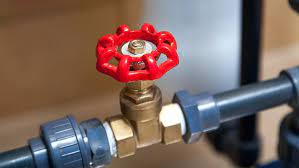While you might not think much about it, your toilet shut-off valve is a silent hero in your home’s plumbing system. This unassuming component holds the power to prevent leaks, floods, and potential water disasters in your bathroom. In this comprehensive guide, we will explore the vital role of the toilet shut-off valve, how it works, where to find it, and essential maintenance practices to ensure it’s always ready to protect your bathroom oasis.
The Importance of the Toilet Shut-Off Valve: Imagine waking up in the middle of the night to the sound of running water, only to discover that your bathroom has turned into a watery mess. This is where the toilet shut-off valve comes into play. It allows you to quickly and effectively stop the flow of water to your toilet, giving you the opportunity to address any plumbing issues without the panic of flooding.
Locating the Toilet Shut-Off Valve: Before you can fully appreciate the toilet shut-off valve’s role, you need to know where to find it. Typically, this valve is located on the wall or floor near the base of the toilet. It’s usually shaped like a small wheel or lever. Familiarize yourself with its location to avoid fumbling during critical moments.
Understanding How It Works: The toilet shut-off valve operates similarly to other shut-off valves in your home. By turning the valve clockwise, you close off the water supply to the toilet. This means that if you ever notice a leak, unusual noises, or a malfunctioning toilet, you can turn off the valve to prevent further water flow until repairs are made.
Maintenance for Longevity: Like any mechanical component, the toilet shut-off valve requires occasional maintenance to ensure it functions properly when needed. Here are some maintenance tips:
- Test the valve’s operation every few months to make sure it turns without resistance.
- If you notice any dripping or signs of corrosion, consider replacing the valve promptly.
- To prevent stiffness, turn the valve on and off a few times during maintenance checks.
- Keep the area around the valve clear of clutter for easy access.
Replacing a Faulty Valve: If you encounter a toilet shut-off valve that’s leaky, rusted, or difficult to operate, it’s wise to replace it. A malfunctioning valve defeats its purpose and can lead to unexpected water damage. Consult a plumber if you’re unsure about the replacement process.

Leave a Reply